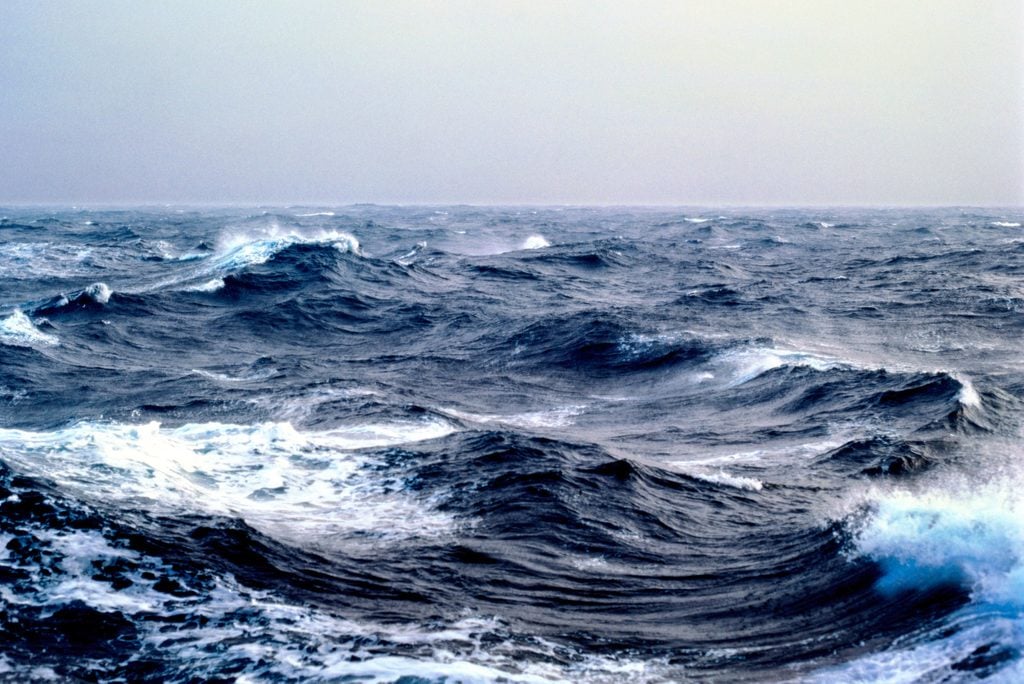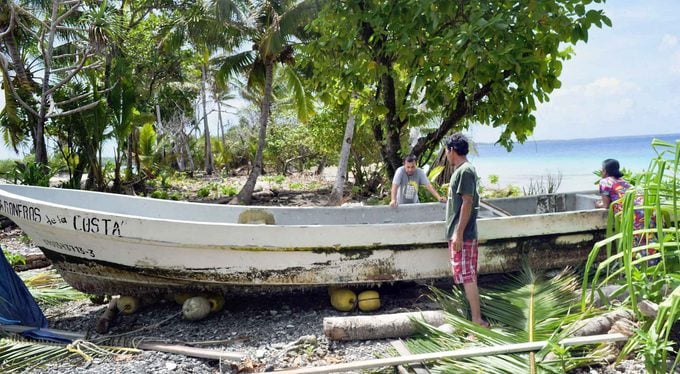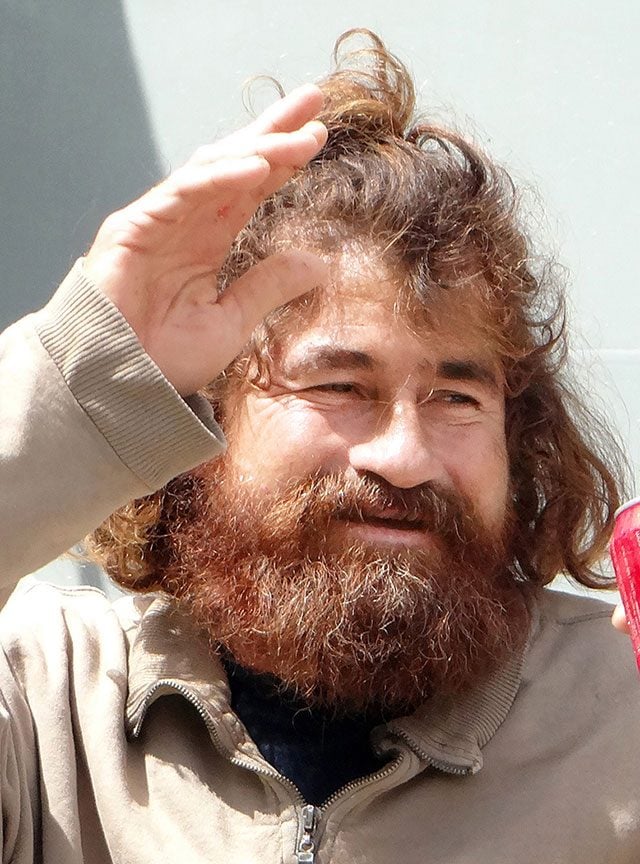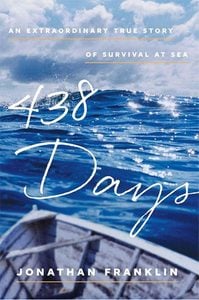This Man Was Stranded at Sea for 438 Days. His Survival Story Will Amaze You.
Updated: Feb. 07, 2023

A fishing trip turns into a terrifying test of survival after Salvador Alvarenga becomes one man against the sea.
Salvador Alvarenga loved the simple lines of the fiberglass craft. No cabin or roof. Just a 25-foot-long narrow, canoe-shaped boat designed to carve up the waves like a huge surfboard, agile and fast, with the engine mounted on the back.
Alvarenga was a 37-year-old Salvadoran fisherman living and working in Mexico. A heavy drinker quick to pick up the tab, he had no family tying him down—his 13-year-old daughter lived with her mother in El Salvador. On this day, November 18, 2012, Alvarenga planned to head out into the Pacific at 10 a.m. and work straight through until 4 p.m. the next day. His crewman was Ezequiel Córdoba, a 22-year-old rookie. Loading the boat involved over a thousand pounds of equipment, including a five-foot-long and four-foot-high icebox that would soon be filled with tuna, shark, and mahimahi.
Alvarenga had been warned that a storm was coming, but there was little that would keep him from embarking. In one day, he’d make enough money to survive for a full week.
As he blasted through the waves some 75 miles from land, Alvarenga let out his two-mile-long fishing line. The storm was gaining strength on land but had yet to reach the men far offshore. That changed around 1 a.m. Waves rocked the small boat, which began to tilt sideways like an amusement park ride. “Get us out of here!” Córdoba screamed to Alvarenga. “Let’s go back!”
With the winds and waves kicking up, the boat began to fill with water. Alvarenga had Córdoba bail, while he pulled in the fishing line. But the crashing waves filled their boat with water faster than they could empty it, forcing Alvarenga to make a radical decision. He cut the line, dumping thousands of dollars’ worth of equipment and fish into the sea. He then pointed the boat toward his home port, Chocohuital, six hours away. Then Alvarenga called his boss, Willie, to report his position.
With the coming dawn, Alvarenga spotted the rise of the mountains on the horizon. He was figuring out a route through the vicious shoreline surf when the motor coughed. “I couldn’t believe it,” says Alvarenga. “We were 15 miles off the coast, and the motor died.”
He yanked on the cord of the outboard motor. Then he yanked again and again until the cord snapped.
High waves raised and dropped the boat, sending the men crashing into the sides. “Willie, Willie!” Alvarenga yelled into the radio. “If you are coming to get me, come now!”
“We’re coming!” Willie shouted back. Shortly after that, the radio died. The wind continued to rip straight offshore, driving the men farther out to sea.
It was five days before the winds finally eased. Alvarenga and Córdoba were now around 280 miles offshore. The only likely rescue was by being spotted by another boat. But that was difficult, as the craft sat low in the water. From more than a half mile away, they were virtually invisible. “We are going to die,” moaned Córdoba.
“Stop it. Don’t think that way,” said Alvarenga. “A rescue mission will find us.” But the men had no flare gun and no way to call for help. “That’s when I knew. We were very far from the coast,” says Alvarenga. “A place where no fishermen go.”
The sun during the day made it feel as if they were being cooked alive. During the cold nights, they would climb inside the icebox and huddle for warmth. Thirst had become an obsession, as had starvation. “I was so hungry that I was eating my own fingernails,” says Alvarenga.
When the rain finally came, four days later, the men stripped off their clothes and showered in a glorious deluge of freshwater, laughing and lapping it up. By the time it stopped, they had collected five gallons of freshwater in plastic bottles they’d found floating in the ocean. It was enough for at least a week if rations were kept to a minimum.
Roughly 11 days after losing the engine and subsisting on small, bony triggerfish he caught by hand, Alvarenga heard a thunk in the night. It was a turtle. He eagerly hauled it aboard. They could eat the turtle and drink the merlot-colored blood to quench their thirst.
Alvarenga now spent entire days hunting for turtles. Córdoba, however, was disgusted by the congealed blood and ate sparingly of the meat. Alvarenga seduced his mate into eating by presenting the turtle steaks as a delicacy. He cut the meat into thin strips, dripped on salt water for flavoring, and toasted them in the sun on the outboard motor housing. Using the vertebrae of triggerfish as toothpicks, he served his meal on a turtle shell.
Turtle meat staved off the worst effects of starvation, but the two men were living off survival rations, which drove their fertile imaginations to run wild.
“Oranges … Bring me oranges,” a delusional Córdoba pleaded.
“OK, I am going to the store. I will see if it is open,” Alvarenga answered, striding the length of the boat. After five minutes, he strode back. “The store is closed, but they open in an hour, and they have fresh tortillas.”
To his surprise, it worked. Córdoba stopped moaning and fell asleep.

After a couple of months adrift, Alvarenga had settled into a routine. By 5 a.m., he was awake and sitting on the deck. “It was joyous because the sun rose up in the east, and I knew somewhere back there was land,” he says. “That was where my world lay.” He then hauled in the traps, curious to see if any fish had been caught overnight. Regardless of the haul, he always waited for Córdoba to awake before dividing the meager catch. Naps followed, and then for most of the day, they sat entombed in the icebox.
Despite being strangers when they set out, Alvarenga and Córdoba had formed a friendship. Like adolescents on an adventure, the two men would lie down at night, faces skyward, and doodle with the stars. Night after night, they tried to outdo each other as they invented constellations, each man trying to create a more fantastic drawing. They even fantasized that the planes they tracked across the heavens had been sent to rescue them. At other times, Córdoba sang proud renditions of his favorite hymns, often from inside the icebox, where the acoustics were better. “I loved to listen to him sing,” says Alvarenga.
On the evening they estimated was Christmas Eve, the men chatted as they prepared their holiday feast. By now, Alvarenga had expanded their menu by hunting the seabirds that perched on their boat. Suddenly, Córdoba groaned: “My stomach!” Bubbles and liquid dribbled from his mouth, and he looked as if he would be sick. The men dissected the bird Córdoba had eaten part of earlier. Inside the stomach was a poisonous snake. Though Córdoba recovered, in the realm of psychological terror, the venom had taken possession of him. He retched at the thought of eating another raw seabird and withdrew from the world of food.
Over the next two months, as Córdoba withered and shriveled, his arms looked like sticks, and his thighs were reduced to the size of his forearm. He imagined it was better to die in the ocean than starve to death.
“Goodbye, Chancha,” he said, using Alvarenga’s nickname, then prepared to throw himself over the rail and into the shark-infested waters.
Alvarenga overpowered Córdoba. He dragged him along the floor, stuffed him into the icebox, and sat on the lid. Córdoba bashed and thrashed. “Stop thinking about killing yourself,” Alvarenga yelled.
When Córdoba calmed, Alvarenga slid off the icebox and crawled inside. “We have to fight,” he told his friend. “To tell our story.”
But the depression had sunk in. A few days later, Córdoba announced, “I am dying.” Alvarenga put freshwater to Córdoba’s mouth, but his mate did not swallow.
“Don’t die,” said Alvarenga, panicked. “Don’t leave me alone!”
Moments later, Córdoba was dead. “I propped him on the bench to keep him out of the water,” says Alvarenga.
The next morning, Alvarenga climbed out of the icebox and stared at Córdoba, sitting on the bench like a sunbather. “How do you feel?” Alvarenga asked the corpse. “How was your sleep?”
“I slept good. Have you had breakfast?” Alvarenga said, as if he were Córdoba speaking from the afterlife.
“Yes, I already ate.”
“Me too. I ate in the Kingdom of Heaven.”
Alvarenga had decided the easiest way to deal with losing his companion was to simply pretend he hadn’t died.
“How is death? Is it painful?”
“Death is beautiful. I am waiting for you.”
“I don’t want to go,” retorted Alvarenga. “I am not headed that way.”
Six days after Córdoba died, Alvarenga slid his friend into the water. Alvarenga was alone, a tiny speck in the vast Pacific. “I climbed inside the icebox and cried,” says Alvarenga.
With Córdoba gone, Alvarenga concentrated on keeping himself occupied. Hunting distracted him from his daily isolation, as did the fantasy of being rescued. And because his psyche required a change of scenery, he designed a shark-detection system that permitted him to take brief swims. First, he tossed a half-dozen birds’ feet into the water. If no sharks appeared, he lowered himself in and went for a refreshing, albeit nerve-racking, swim. When the smaller fish that lived under his boat were relaxed, he was relaxed, and when they panicked, he scampered back aboard. “I would imagine I was at the beach with my friends, going for a swim,” he says. “Getting off the boat allowed me to relax, even if it was for five minutes.”
But more and more, Alvarenga found strength from the long-abandoned relationship with Fatima, his now 14-year-old daughter whom he hadn’t seen in years. “I started thinking about her for entire days. I dreamed that she was screaming, ‘Papi!’ and that made me so happy.”
Alvarenga imagined his life if he could ever make it home. He would be a family man with a clutch of children and a field full of animals. He begged to the heavens for a final chance, an opportunity to salvage the relationship with Fatima.
The container vessel that appeared on the horizon was heading directly toward him. It advanced until it was so close, Alvarenga feared it might slice his boat in half. Fifty yards astern, the ship crossed his path. “Help! Here! Here!” Alvarenga screamed at the three figures standing near the stern, fishing rods in hand. The men waved. He had been spotted.
But the men didn’t move. No one ran for help. And not only was the giant ship not slowing, but the casual waving continued even as they pulled away.
“Do you think I’m out here on a day trip?” Alvarenga screamed.
The near miss devastated Alvarenga. His mind began to weaken, and his reflexes slowed. His desire to eat was succumbing to a more basic craving: to close his eyes. Alvarenga remembered Córdoba’s bored stare and lack of interest in food. That same lethargy now contaminated his mind.
In 11 months at sea, Alvarenga had drifted 5,000 miles at an average speed of less than one mile an hour. His clothes were shredded. Only a sweatshirt that had belonged to Córdoba protected him from the sun. From the waist down, he was naked except for a pair of ratty underwear and the random floating sneaker snatched from the sea. Atop his head, a burled mane of copper- colored hair rose in coils. From his face, a thick beard exploded outward.
Alvarenga questioned if his journey was a life lesson sent by God. By all reasonable standards, he should have been dead months earlier. Was he being allowed to live for a reason? Had he been chosen to bring a message of hope to those considering suicide? “What could be worse than being alone at sea? That’s what I could tell someone thinking about suicide. What further suffering could there be than this?” he says.
On January 30, 2014, coconuts bobbed in the water, and the sky was filled with shorebirds. A cold rain limited visibility. Alvarenga stood on the deck, staring out. A tiny tropical island was emerging from the rainy mist. It looked wild, without roads, cars, or homes.His first urge was to dive overboard and swim to shore. But leery of sharks, he waited. It took him half a day to reach land. When he was ten yards from shore, he dived off the deck and let a wave carry him in. As the wave pulled away, Alvarenga was left facedown on the beach. “I held a handful of sand in my hand like it was a treasure,” he said.
Alvarenga was discovered by the lone couple who inhabited the island. He had washed ashore on the Ebon Atoll, the southern tip of the Marshall Islands, one of the most remote spots on Earth. Had Alvarenga missed Ebon, the next likely stop was the Philippines, 3,000 miles away.

After 11 days, Alvarenga’s health had stabilized enough for him to travel home to El Salvador. When Alvarenga saw Fatima, he grabbed his daughter. “I love you,” he said, sobbing. Fatima hugged him even harder. “I know I didn’t raise you and that all those years are lost. But Dad is here to give you advice, to help you learn right from wrong.”
Alvarenga had completed one of the most remarkable voyages in the history of seafaring. He didn’t navigate, sail, row, or paddle—he drifted. Unable to alter course, he had been forced to build a world of survival. He was extremely unlucky and terribly fortunate at the same time.
And now he was home.

Read more of Alvarenga’s incredible and inspiring survival story in the book 438 Days: An Extraordinary True Story of Survival at Sea by Jonathan Franklin.